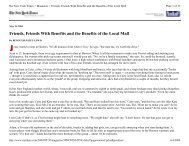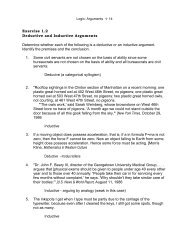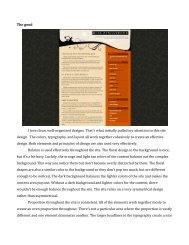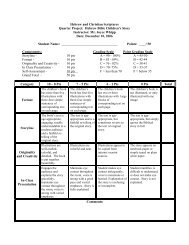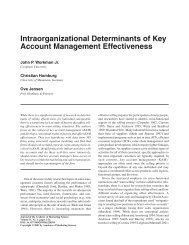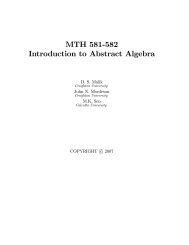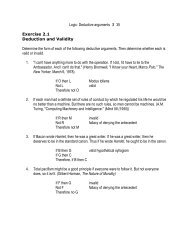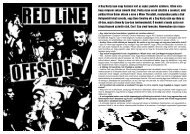Plato_Apology-Crito_..
Plato_Apology-Crito_..
Plato_Apology-Crito_..
Create successful ePaper yourself
Turn your PDF publications into a flip-book with our unique Google optimized e-Paper software.
Critical & Historical Intro. to Philosophy n Quiz # 1 n page 2corporations are] for-profit organizations” (c) an argument in which the conclusion is “no nonprofitcorporations sell stock”12. (1) “Without this welfare program, some poor people would have no means of support, (2) so we simplymust not eliminate it. (3) For the government has an absolute duty to provide everyone with at least thebare essentials of life.” The conclusion of this argument is(a) statement (1)(b) statement (2)(c) statement (3)13. Which of the following is not a characteristic of deductive arguments? (a) if the argument is valid, theconclusion is always true (b) the conclusion is contained implicitly within the premises (c) if theargument is valid, the relationship between the premises and the conclusion is one of necessity14. The relationship between the premises and the conclusion of inductive arguments is always a matter ofprobability because (a) all inductive arguments are flawed arguments (b) the conclusion of an inductiveargument makes a leap into the unknown or future or past (c) we cannot know whether the premises ofinductive arguments are true or false15. Inductive arguments (a) always move from specific to general (b) sometimes move from specific togeneral (c) never move from specific to general16. Validity refers to (a) whether an argument is true or false (b) whether the relationship between thepremises and the conclusion of deductive arguments is correct (c) whether the premises in the argumentare true (d) whether the relationship between the premises and the conclusion of inductive arguments iscorrect17. The strength of an argument refers to (a) how persuasive the argument is (b) whether the relationshipbetween the premises and the conclusion of a deductive argument is correct (c) whether the relationshipbetween the premises and conclusion of an inductive argument is correct18. If the premises of an inductive argument are false and the argument is weak, the conclusion(a) is definitely false (b) may be true or false (c) is definitely true19. If the premises of a deductive argument are true and the argument is valid, the conclusion (a) willprobably be true, although it may be false (b) must be true (c) may be true or false20. In evaluating arguments (both inductive and deductive), there are two tasks one can engage in. One ofthese is (a) to distinguish between the premises and the conclusion (b) to question whether thestatements within the argument are true (c) to analyze the structure of the argument21. The other evaluative task is (a) to determine whether the argument is persuasive (b) to determinewhether the argument is useful (c) to determine whether the relationship between the premises andconclusion is correct22. Truth and falsity are properly applied to (a) statements (sentences) (b) arguments (c) simple concepts



